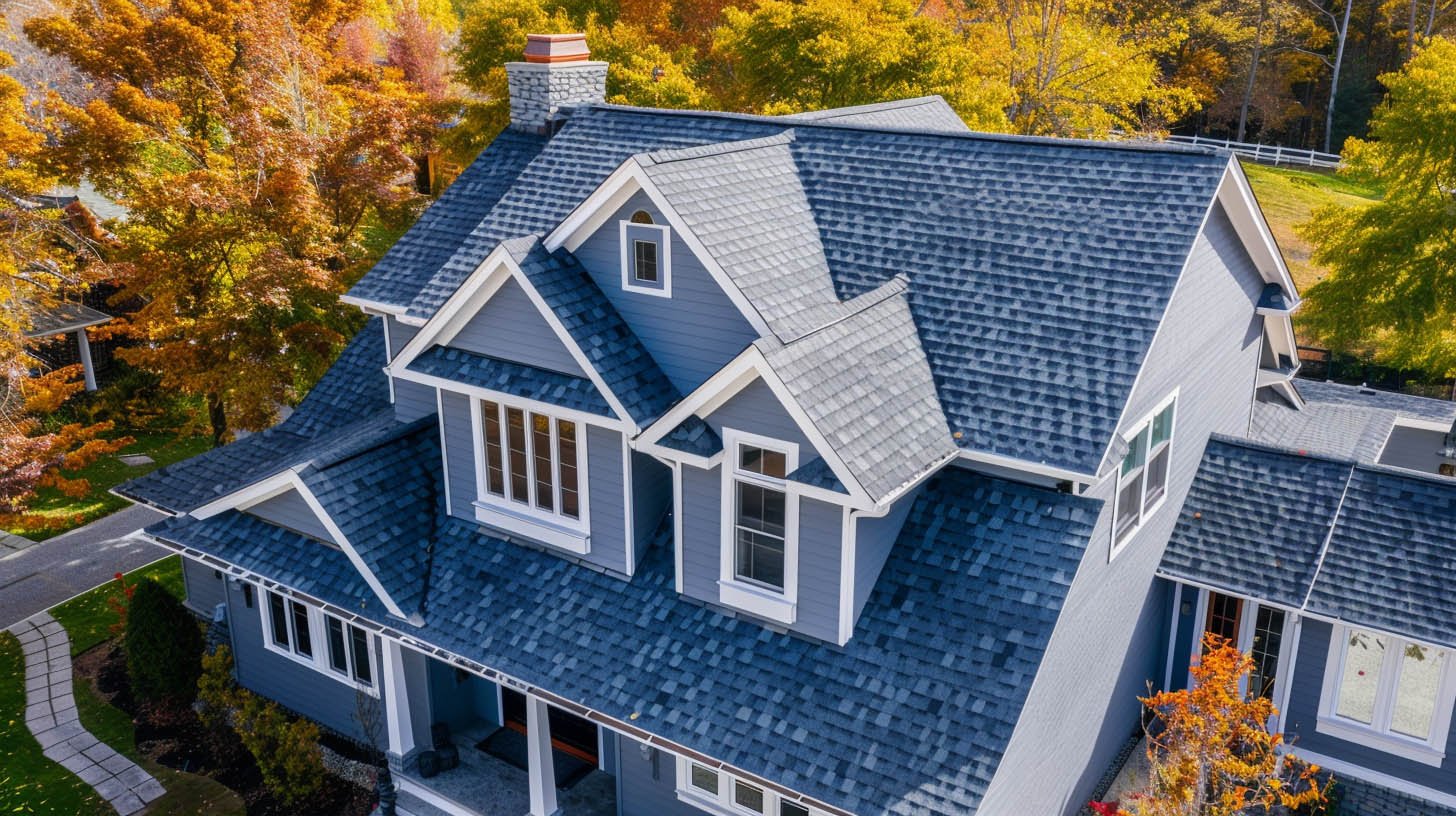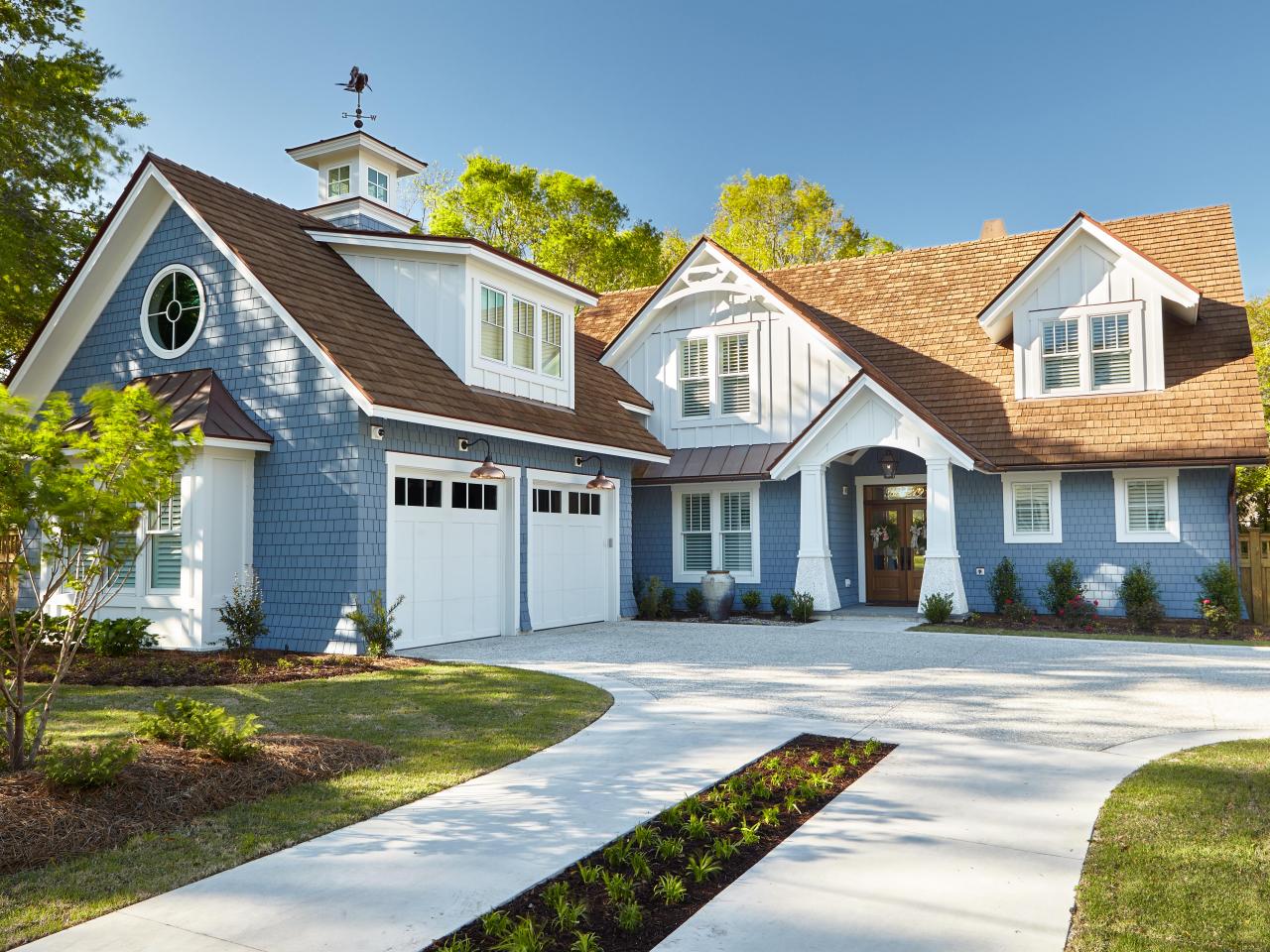Home improvement
Room Revamp: How Color and Painting Techniques Can Transform Your Space

Key Takeaways
- Understanding the psychological impact of color in home interiors is crucial for creating a desired ambiance.
- Lighting plays a significant role in how colors are perceived in interior spaces.
- Different painting techniques can dramatically alter the look and feel of a room.
- Quality paint selections contribute to the paint’s durability and aesthetic appeal.
Introduction to Residential Painting
The journey of home transformation often begins with a simple desire for change. Choosing the right colors and painting techniques revitalizes your abode’s look and reflects your unique style and personality. As aesthetic and environmental considerations become increasingly significant, homeowners are turning to reliable sources such as house painters Minneapolis for guidance in navigating the myriad choices of residential painting.
Painting Techniques That Enhance Room Dynamics
The technique with which paint is applied can profoundly influence the atmosphere and dimension of a room. Brush and roller strokes can be manipulated to create textures and patterns, lending a sense of depth and complexity to flat surfaces. For instance, a glaze finish can add a subtle, reflective quality, while a sponging effect can imbue the walls with a warm, rich texture. These artistic flourishes can transform a monotonous room into a dynamic and engaging space. Mastery of various painting techniques allows homeowners to experiment with effects that complement their home’s aesthetic and architectural features.
Selecting Quality Paints for Longevity and Aesthetics
Championing quality in paint selection is an investment in the longevity and beauty of your home’s interior. High-quality paints provide better coverage, meaning fewer coats are required, and they last longer before showing signs of wear and tear. They also have a wider variety of colors and finishes that match well with any design style. However, it is also necessary to understand paint components and their ramifications for health and environmental impact. Choosing low or zero volatile organic compound (VOC) emissions can greatly enhance indoor air quality and create a healthier living environment. Vigilant homeowners must balance aesthetic desires with practical considerations to make the best environmental choices.
DIY Painting Tips for Amateurs
Amateur painters can achieve professional-looking results with a bit of know-how and patience. It starts with selecting the right brushes or rollers for the job — finer bristles for smooth finishes and thicker nap rollers for textured walls. One should also be mindful of the painting sequence, starting from the ceiling and moving towards the baseboards. Adequate protection for flooring and furniture is a must. A DIY paint job can be rewarding with the proper approach, instilling a personal touch and a sense of accomplishment.
Professional Painting Services Vs. DIY
While taking on a painting project can be a fulfilling DIY project, the expertise of professional painting services brings undeniable value, especially for complex jobs or large-scale undertakings. Skilled painters have the experience, tools, and techniques to deliver high-quality results efficiently. A professional touch can be particularly beneficial when dealing with high ceilings, intricate trim work, or specialty finishes. Ultimately, deciding between DIY and hiring a pro will depend on the individual’s time, skill level, and budget considerations.
Maintaining Your Painted Surfaces
Ensuring the longevity of your newly painted walls involves more than admiring their beauty. Routine cleaning, careful inspections, and appropriate touch-ups when necessary can maintain the walls’ luster and longevity. Be vigilant of any signs of peeling, cracking, or chipping, and address those issues swiftly to keep your surfaces pristine. With proper care, your painted walls will continue to exude elegance and charm, much like fine art, enriching your living space for years.
Home improvement
Garage Door Design Trends: Modern and Stylish Options

Contemporary home design increasingly embraces sleek and innovative elements, and garage doors are no exception. Modern designs focus on clean lines, minimalist aesthetics, and integrating new materials and technologies. Features such as expansive glass panels, bold geometric patterns, and various finishes, from matte to high gloss, reflect today’s homeowners’ evolving tastes and functional needs. Using materials like aluminum and composite ensures durability and low maintenance while allowing for a wide range of customization. These advancements have transformed traditional garage doors into stylish and functional components that enhance modern homes’ overall look and efficiency.
Popular Styles and Materials
Garage doors come in diverse styles to complement various architectural designs and personal preferences. From traditional raised-panel doors and classic carriage-house designs to sleek contemporary models and modern glass-paneled options, a garage door suits every home’s aesthetic. Homeowners can choose from wood, steel, aluminum, and fiberglass, each offering unique benefits such as durability, insulation, and ease of maintenance. Whether aiming for a rustic charm with a wooden door or a minimalist look with a glass design, the wide range of styles ensures that every garage door enhances the overall appeal and functionality of the home.
Incorporating Smart Technology
Incorporating innovative technology into home systems has revolutionized convenience and security; garage door openers are no exception. Homeowners can now use smartphone apps to remotely monitor and control their garage doors. These openers provide real-time updates and remote door opening and closing capabilities. This integration enhances home security by providing alerts about door activity and enabling users to grant access to trusted individuals without being physically present. Additionally, proximity cards and intelligent openers can be programmed to work with other smart home devices, creating a seamless and connected living experience that aligns with the latest advancements in home automation.
Eco-Friendly and Sustainable Options
The trend toward environmentally friendly home improvement options has significantly impacted garage door designs, leading to a surge in eco-conscious choices. Modern garage doors are now crafted from sustainable materials like recycled steel, reclaimed wood, and eco-friendly composites that reduce environmental impact without sacrificing style or durability. These doors often feature enhanced insulation properties to improve energy efficiency, helping to regulate home temperatures and lower utility bills. Additionally, manufacturers are increasingly adopting environmentally friendly production processes and finishes that minimize harmful emissions. These eco-friendly developments in garage door designs demonstrate a more outstanding dedication to sustainability and responsible living as homeowners work to lessen their carbon footprint.
Choosing the Right Garage Door for Your Home
Selecting the ideal garage door for your home involves balancing aesthetics, functionality, and durability to match your specific needs and architectural style. Start by considering the material of the door, as options like wood, steel, and fiberglass each offer different benefits, from classic charm to modern resilience. Insulation is another crucial factor, mainly if your garage serves as a workspace or is attached to your home, as it can impact energy efficiency and comfort. Additionally, consider the door’s design and color to ensure it complements your home’s exterior. Considering these factors thoughtfully will help you find a garage door that enhances the aesthetic of your home and meets your practical requirements.
Home improvement
Effective Strategies for Maintaining Your Roof’s Longevity and Health

Key Takeaways:
- Understanding the importance of regular roof maintenance.
- Tips on how to spot common roofing issues early.
- Advice on seasonal roof care to extend your roof’s life.
- Insight into eco-friendly roofing options.
- Resources for professional roofing inspections.
The Importance of Regular Roof Maintenance
Maintenance is essential to guaranteeing a roof’s lifespan and effectiveness. Frequent inspections assist in identifying possible problems before they worsen. Ignoring roof maintenance can lead to significant repair costs down the line. A professional roofing company can offer thorough inspections and maintenance plans tailored to your needs, ensuring your roof stays in optimal condition throughout the year.
According to Architecture and Design, consistent roof inspections can extend the roof’s lifespan by up to 50%. This substantial extension emphasizes the importance of staying vigilant and proactive with roof care. In addition to extending the lifespan of your roof, routine maintenance shields your house from potential water damage, mold growth, and structural problems that can result from neglected roofs.
Spotting Common Roofing Issues Early
Identifying problems early can save homeowners a lot of trouble. Look out for cracked shingles, water stains on your ceilings, and any visible sagging or damage. These signs indicate that your roof may need attention. A roofing company can help pinpoint these issues and provide solutions before they escalate into more severe problems. By performing regular self-inspections, especially after severe weather, you can catch issues before they worsen.
Seasonal Roof Care Tips
Your roof faces new problems with every season. To prevent ice dams in the winter, shovel snow as soon as possible. If ice dams are not removed, they can seriously harm your roof’s structure and gutters. Gutter cleaning in the fall is crucial to avoid obstructions that could result in water damage. Spring is the best time for a comprehensive inspection to assess and repair any damage that might have occurred during the colder months. Water leaks under your shingles are avoided by routinely clearing debris from your roof and gutters.
Summer can also cause wear and tear due to intense heat and UV rays. The intense sunlight can cause roofing materials to deteriorate faster, leading to cracks and leaks. Using reflective roof coatings can help mitigate some of the damage caused by UV rays. Regular maintenance throughout the year ensures your roof stays in optimum condition, regardless of the season. Scheduling routine inspections at the beginning of each season can help identify potential problems before they become serious.
Eco-Friendly Roofing Options
Several eco-friendly roofing materials are available for those looking to reduce their environmental impact. Options like recycled shingles, metal roofing, and green roofs not only help the environment but can also improve your home’s energy efficiency. Recycled shingles, for example, use materials like rubber and plastic, significantly lowering the environmental footprint compared to traditional options. These materials often come with a longer lifespan, reducing the need for frequent replacements.
Metal roofing is highly durable and reflects solar heat, reducing cooling costs in the summer. It’s also fully recyclable at the end of its life, making it a sustainable choice. Green roofs, which involve planting vegetation on your roof, provide natural insulation and absorb rainwater, reducing runoff and providing a habitat for wildlife. These roofs can also improve air quality and reduce urban heat island effects. Considering the numerous benefits, eco-friendly roofing options represent a worthwhile investment for the environment and your wallet.
When to Consider a Roof Replacement
Roofs don’t last forever. If your roof is over 20 years old and showing signs of wear, consider a roof replacement. New roofing materials are more durable and energy-efficient than those from decades past. Investing in a new roof can raise your house’s exterior appeal, value, and energy efficiency. Advanced materials provide better performance and aesthetics. Examples of this include metal roofing and architectural shingles.
Persistent leaks, widespread shingle damage, and noticeable sagging are signs that you may need a replacement. A professional roofing contractor can provide an honest assessment and help you choose the best materials for your new roof. You must weigh the benefits and drawbacks with a trustworthy expert before choosing a complete replacement. They can guide you through your options and ensure that you make the best decision. You should consider warranties, installation costs, and continuing maintenance before deciding.
Choosing the Right Roofing Contractor
Selecting a reputable contractor is crucial for any roofing project. Ensure they have proper licensing, insurance, and positive reviews from previous customers. A good contractor will offer a detailed estimate and warranty on their work. Transparency about the costs and expected timeline for the project is also a hallmark of a reliable contractor. They should be willing to answer all your questions and provide written agreements.
Choosing a local contractor is also beneficial, as they will be more familiar with your area’s climate’s specific challenges and requirements. A local contractor will likely grasp local building rules and permit procedures and respond quickly. If you choose the proper contractor, your roof will last longer and be of higher quality. Using industry credentials, personal recommendations, and internet reviews, you may make an informed decision and guarantee that your roofing project is finished to the highest standards.
Home improvement
Tips for Maintaining the Value of Your Home

Homeownership is a cornerstone of the American dream, but it comes with the responsibility of upkeep to ensure that the investment remains strong over time. This article will explore how simple maintenance, intelligent upgrades, and vital strategies can preserve and boost your home’s market value.
Key Takeaways:
- Understanding the importance of regular maintenance to sustain property value.
- Identifying cost-effective upgrades that can boost your home’s marketability.
- The role of curb appeal in preserving your home’s worth.
- How innovative technology can play a part in enhancing your living space?
- The benefits of professional inspections are that they prevent costly repairs down the line.
Regular Maintenance: Avoiding Costly Repairs
Residential upkeep should always be considered. Diligent homeowners know that preventive maintenance is much more cost-effective than reactive repairs. For example, regularly clearing gutters may seem trivial, yet it prevents water damage, which can lead to expensive roofing repairs. Monitoring HVAC systems ensures they run efficiently and reduces the likelihood of emergency breakdowns. By keeping up with maintenance, you not only avoid the inconvenience of sudden malfunctions but also protect the value of your property by preventing deterioration. In local homes Dallas PA, as with any area, maintaining or increasing home value requires strategic planning and informed decisions.
Cost-Effective Upgrades for a Modern Home
The only sometimes els only sometimes yield the best return on investment. Sometimes, it’s the subtle enhancements that resonate with prospective buyers or appraisers. Replacing old carpets with fresh, modern flooring or switching outdated cabinetry hardware can infuse new life into a home. These small touches can demonstrate a home’s readiness for sale without a sizable outlay. The strategy is to choose upgrades that visually and functionally align with current lifestyles and trends while focusing on cost versus value added.
Curb Appeal: First Impressions Count
Your property’s exterior setting stages the expectation of what’s within. Imagine the impact of blooming flowers versus unkempt shrubs or a bright, inviting door against weather-worn ones. Refreshing the landscaping, installing modern outdoor lighting, or even ensuring that the house number is visible and stylish are minor touches that play into the marketability of your home. Excellent curb appeal can set your property apart in a competitive housing market, heralding the care invested within its walls.
Incorporating Smart Home Technology
Modern homeowners and buyers are increasingly tech-savvy, leaning towards properties that offer technological conveniences. Integration of smart home devices such as energy-saving thermostats, app-controlled lighting, and advanced security systems is a sound investment. This tech trend offers immediate utility savings and enhanced security, and appeals to environmentally conscious buyers, potentially increasing a home’s desirability and value.
Professional Inspections: Preventing Unforeseen Expenses
It’s one thing to visually inspect your home and entirely another to have it evaluated by a trained professional. Periodic inspections can uncover issues that, if left unnoticed, could spiral into significant financial burdens. Whether checking for termite infestation, reviewing electrical systems, or assessing structural integrity, inspectors provide invaluable insights into the state of your property. Addressing issues promptly upon their advice can preclude value depreciation and prepare your home for unexpected market opportunities.
Environmental Factors and Your Home
Environmental conditions act silently but significantly on property values. Factors like local climate changes, flood risks, or air quality can sway a property’s long-term appeal. With increased awareness of these external forces, homeowners are taking measures like reinforcing insulation, waterproofing basements, or incorporating green spaces to enhance their homes’ resilience against environmental threats. These strategic choices protect against degradation and make homes more marketable in an environmentally-conscious era.
Home Value and Community Engagement
Understanding the broader picture of your neighborhood’s evolution is crucial to maintaining home value. Staying up-to-date with municipal development plans or property zoning changes can provide insights into future desirability and market trends. Moreover, being part of community initiatives or local governance can ensure your voice is heard in matters affecting property value while fostering a sense of community that can be a selling point for potential buyers.
For actionable advice on guarding against environmental risks and promoting sustainability within your home, the Environmental Protection Agency offers comprehensive resources detailing climate impacts on homes. In parallel, leveraging the potential of innovative technology in your home can be made simpler with the latest information found within the Smarter Living section of The New York Times, helping homeowners stay current with trends that can add both convenience and value.
-

 Tech2 years ago
Tech2 years agoUnderstanding “преводеч” in the Modern World
-

 Fashion2 years ago
Fashion2 years agoExploring the Fascinating World of λιβαισ
-

 Lifestyle2 years ago
Lifestyle2 years agoJustin Billingsley Connecticut: A Journey of Impact and Leadership
-

 Tech2 years ago
Tech2 years agoUnderstanding ПРЕВОДЕЧ: Unlocking Global Communication
-

 News2 years ago
News2 years agoUnveiling the Mystery: Paige Bueckers’ Boyfriend Revealed
-

 Tech2 years ago
Tech2 years agoGeekzilla.tech Honor Magic 5 Pro Ultimate Guide.
-

 Business2 years ago
Business2 years agoExploring the Success Story of VC7774
-

 Blog2 years ago
Blog2 years agoThe Ultimate Guia Silent Hill Geekzilla: Comprehensive Guide
